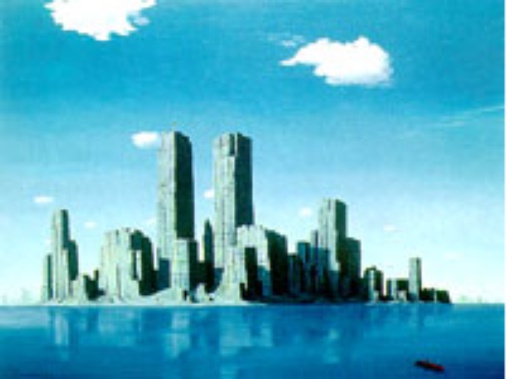Magic and Mythology in Estonia
Published on
The Estonian physical landscape consists mainly of swamps, landfill and flat farmland. Yet the country’s conceptual landscape is rich with extraordinary visions. One of the most accessible places to see these visions is in the art of the painter Navitrolla.
 Giraffes, zebras and lions are not native to Estonia, and yet they populate Navitrolla’s paintings, often appearing as lonely figures who give scale to bleak landscapes under vast, richly tinted skies. Some have been quick to interpret these paintings as representative of Estonia’s self-image: a small people in a large world.
Giraffes, zebras and lions are not native to Estonia, and yet they populate Navitrolla’s paintings, often appearing as lonely figures who give scale to bleak landscapes under vast, richly tinted skies. Some have been quick to interpret these paintings as representative of Estonia’s self-image: a small people in a large world.
Artistic surrealism
In other paintings, landscapes are deformed beyond recognition into mushroom-shaped rock formations, teetering boulders, and heavy meteorites floating in midair. A city of stone skyscrapers (“Manhattan”) floats free like a ship. Shipwrecks, floods, Noah’s Ark and the rebirth of life after devastation are other common themes in Navitrolla’s highly colourful oil paintings which remind some critics of the Dutch and Flemish landscape masters and others of Dalí.
Born in 1970 in the southern Estonian city of Võru as Heikki Trolla, the artist who would be known as Navitrolla learned some basic techniques from a local artist but was largely self-taught, and in his personal statements he seems rebelliously proud of his failure to get into art school: “It seemed that being an artist could not be something decided only by officials.” He decided to draw animals, he said, because they would be uncontroversial: “Almost everybody likes dogs and, then, nobody could accuse me of political incorrectness, antifeminism or some other nonsense of that kind.”
Safety in animals
Trolla began to exhibit in 1989 as part of a renegade group called Lüliti and quickly gained a following. Around this time, the poet Kauksi Ülle, who was also from Võru, referred to him as “Navi Trolla,” meaning “Trolla from Navi,” a nearby town where he spent part of his childhood, and he began signing his work with this name. Although his surrealistic style allowed him to skirt political controversy, Navitrolla did attract artistic controversy, namely the question of whether paintings that look like the cover of a science fiction book could be considered respectable national art for a country that is reinventing itself in front of the world. The public seemed to think they could, and Estonian author and critic Andrus Laansalu even found associations with Finno-Ugric mythology in the animal symbolism of cows, horned dogs, and reindeer – as well as the broader European tradition of Bosch and Brueghel and, from the New World, mystic Carlos Castaneda.
The Navitrolla phenomenon is just part of a general trend toward magical realism in Estonian arts which is not surprising when one considers that the two of its larger towns, Tartu and the capital Tallinn, are built around medieval fortress hills, complete with ruins, that make for a dramatic setting. History, alternative realities and an exciting new future are reflected in a people awake to new possibilities.



